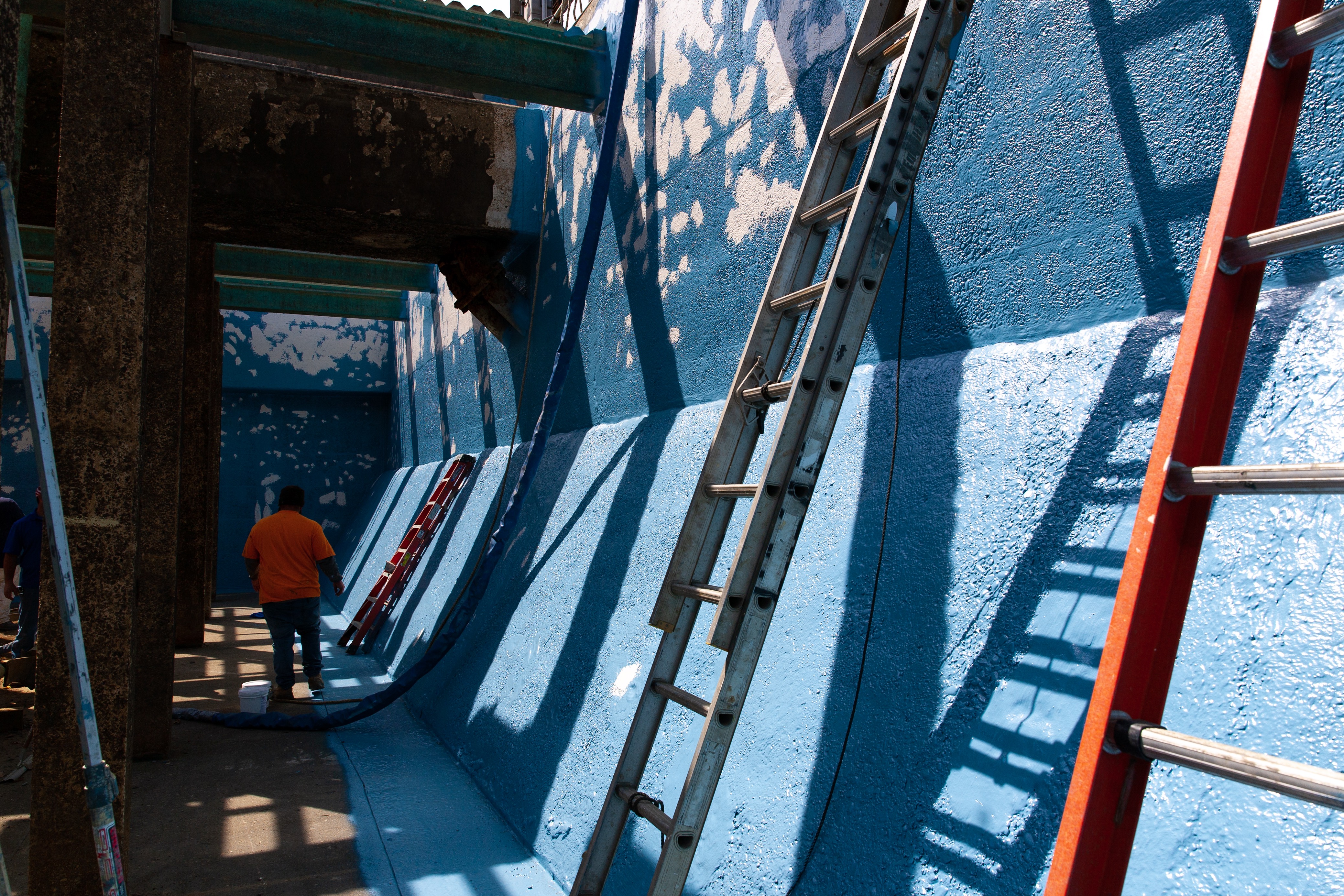By: Russell Hicks, Induron Sales Representative
 This case study was originally published in Water & Wastes Digest.
This case study was originally published in Water & Wastes Digest.
Texarkana Water Utilities needed to rehabilitate a concrete clarifier in the Millwood Potable Water Treatment Plant in Ashwood, AR for the facility to effectively treat the potable water used in the surrounding community.
The Problem
The concrete floors and sidewalls of the clarifiers in the potable water treatment facility were old and in a poor state. There were areas of cracking, spalling and even leaking concrete that called for extensive repair. To comply with health regulations, this remedial activity was recommended. Plus, coatings in water treatment facilities where the water contacts the paint must be NSF Standard 61 approved to ensure harmful contaminants do not leak into the water. So, this project required cleaning, repair and careful specification and application of proper coatings.
The Solution
First, the concrete was prepped with a 5000 Psi power wash with an acid etch solution to fulfil the ICRI CSP-3 concrete surface profile. ICRI CSP-3 is one of ten classifications of surface textures developed by the International Concrete Repair Institute (ICRI). These classifications are accepted as industry standards that guide the installer on how to achieve the proper texture for successful bonding of the overlay or coating. CSP-3 is the recommended cleanliness and profile for applying high build coatings (10- 50 mils DFT) and is usually achieved on vertical surfaces by using a light blast.
Next, Sika Flex 123, which is a two-component, polymer-modified, fast-setting, non-sag mortar, was used to fill the eroded and cracked areas of the concrete. Sika Flex 123 was specified because it is NSF Standard 61 approved for contact with potable water.
Then, Induron’s AquaClean, which has excellent flow, wetting and adhesion to concrete, was used as a prime coat to mitigate out gassing. Because concrete is porous by nature, its breathing often leads to pin holes in the coating, which can lead to water soaking into the concrete and potentially lead to paint failure. AquaClean was specified because it can easily be applied in a thin film of 4.0 to 6.0 mils and is NSF Standard 61 approved.
Lastly, Induron’s PermaClean 100 was used as a barrier coating because of its unrivaled film build and ultra-low permeability. PermaClean was previously NSF approved for 50 mils, but to meet the needs of this particular project, we had it NSF Standard 61 tested and re- certified for 150 mils DFT in three coats. Having PermaClean NSF Standard 61 certified for additional mils was one of the largest hurdles of the project.
The Importance of NSF
In this project, using NSF Standard 61 approved products was the priority to comply with the Arkansas Health Department’s requirement that “All surfaces that come into contact with potable water must have an NSF-approved product from the top of the film to the concrete substrate.”
NSF certification is the key to ensuring that products meet strict standards for public health protection. Products must undergo extensive testing and material analyses as well as unannounced plant inspections to evaluate every aspect of the product’s development before it can earn an NSF certification. Plus, NSF Standard 61 certification is not a one-time event—it involves regular on-site inspections of manufacturing facilities and regular re-testing of products to ensure that they continue to meet the same high standards required to maintain certification over time.
Because the Induron products required for this project were either previously certified or obtained NSF certification for the project, we successfully worked with Bazan Coatings to rehabilitate the clarifier and ensure that it complied with Arkansas’s health regulations.





